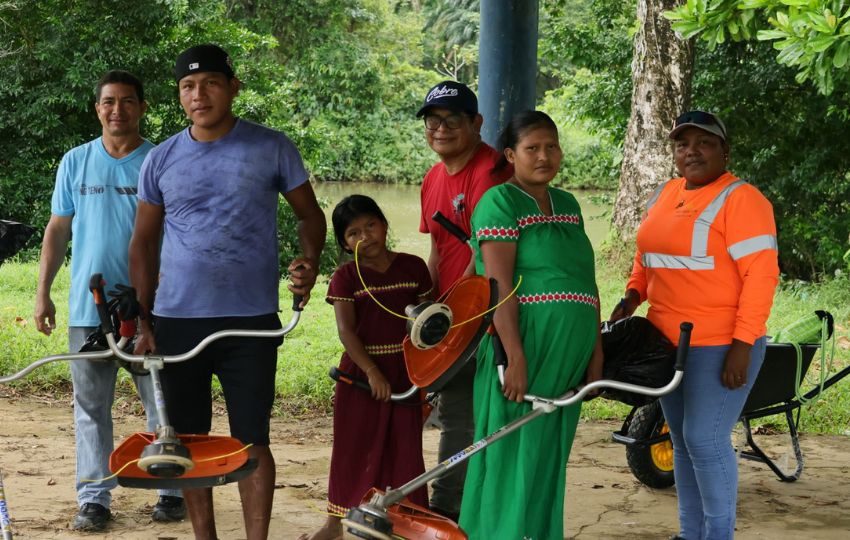INSURANCE: A driver’s guide to surviving a fender bender

By Kevin Bradley
Has this happened to you? Standing in the middle of the road under the hot sun or pouring rain, horns beeping, traffic backing up…….all because you had a collision on the streets of Panama!
Here are the basic procedures to follow after an automobile accident in the Republic of Panama. Based on my experience, interviews with Transit Police and Insurance Company Claims Adjusters, here are some worthwhile suggestions that may help ease your post-bender blues.
Immediately after the collision, call the roadside assistance telephone # of your insurance company and ask that they come to the scene.
When no person has been injured and both parties agree who is responsible, take pictures and move the vehicles to the side of the road. If the other party leaves the scene of the accident, find a policeman and report "Colision y Fuga" (Hit and Run). This may protect you from further legal consequences.
Here is a rough translation of the articles described in the new law:
Article 1. When a minor traffic accident (fender bender) occurs in the public ways of the country, the drivers involved should move the vehicle out of the way, after exchanging the Unique and Final Form that is described in article 4. (Have several forms in your car partially filled). Your insurance company/broker should provide you with a supply to be filled in TRIPLICATE!
Article 2. Regarding the previous article, a minor traffic accident is any collision that happens between one or more motor vehicles where damages, produced by the impact allow the vehicles to be moved out of the way by their drivers, as long as no one involved is injured, otherwise article 5 will apply.
Article 3. The “Autoridad de Transito y Transporte Terrestre” (Terrestrial Traffic and Transportation Authority) along with the “Departamento de Operaciones de Transito de la Direccion Nacional de Operaciones de la Policia Nacional” (National Office of Operations, Traffic Operations Department of the National Police) will provide a Unique and Final Form, which will be used by the drivers involved in minor traffic accidents (fender benders), in order to compile all necessary information to determine responsibility.
Article 4. The drivers of motor vehicles involved in a minor traffic accident (fender bender) will exchange the Unique and Final Form in triplicate, which must be carried in their vehicles at all times.
The form requests the following information:
1. General information about parties involved (Name, License, ID (Cedula, Passport, Pensionado VISA)
2. The description of the vehicles (Year, Make, Model, License Plate number)
3. Exact address where the accident occurred (Street, City, District, Province).
4. Weather conditions and any special circumstances at the scene of the accident.
5. The approximate time, circumstances (see 4) and the final resting position of the vehicles.
6. If possible, the facts may be supported by photographs, videos or any type of technological tool that can facilitate the description of the accident. (sketches, drawings, etc.)
Within 72 hours of the accident, the drivers or the owners of the vehicles will present the Unique and Final Format to the “Autoridad de Transito y Transporte Terrestre” (Terrestrial Traffic and Transportation Authority) located at Centro Comercial Los Pueblos at the rear of SuperCentro El Campeon, close to the Nikos café of Los Pueblos. They must also deliver a copy of the form to the respective insurance companies within seventy two hours of the traffic incident.
Article 5. When a traffic accident occurs, where the vehicles involved suffer damages that prevent them from being moved out of the way by their drivers or if the occupants or third parties result with any type of injury, the presence of an inspector from the “Departamento de Operaciones de Transito de la Direccion Nacional de Operaciones de la Policia Nacional”(National Office of Operations, Department of Operation of the National Police) will be necessary. The traffic officer will have to fill out an official traffic accident form to determine liability.
If the parties do not agree on who is responsible for the accident, one of the parties may request the presence of a Traffic Inspector, call 311 even if the vehicles have been moved.
Article 6. The driver’s license of individuals more than seventy years old will be valid only for two years, with the exception of the restrictions for violations disposed by law and by regulations, and a discount of 50% from its cost will apply.
Article 7. The “Organo Ejecutivo” will regulate the present Law within a sixty days period, counting from its promulgation.
Make sure you have your insurance company’s “Roadside Assistance” sticker affixed to the windshield, this is a valuable tool and a phone call should bring their help. Call your Insurance Broker (put his cel # in your address book).
Finally, check your own drivers license, make sure it is not EXPIRED, your policy will not pay unless you have a VALID drivers license. If you lend your vehicle, check their drivers license to make sure it is not expired.
Print this article and keep it in your automobile.
Kevin Bradley is an insurance broker with Ducruet Insurance. Kevin@ducruet.com





